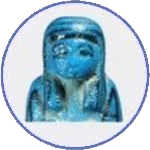HOW DO WE STRIKE A BALANCE?
How do we balance this position with the need to ensure that ancient works of art are not the result of recent looting and illegal export? If we could answer this, we would all be happy. What should be clearly appreciated, though, is that it is the differing standards applied to the paperwork then and now that is the true source of tensions at the centre of the debate, not conflicting approaches to the historical and cultural importance of the objects themselves, nor the importance of protecting them and the countries and peoples from which they emerge. Here, happily, the trade and academe can agree. More should be made of this accord.
The Treasure Act 1996, too, has done much to improve matters in recent years. It is very fair and works well.
Striking a balance between public and private ownership is also important. The recent crisis facing the academic Wedgwood collection is a good case in point. A unique reference archive of material explaining the history and manufacturing methods of the great firm of Wedgwood, its future came under grave threat as the result of a peculiar and obscure legal anomaly that left it exposed as the single greatest asset in relation to claims based on the company’s pension fund.
Fortunately the Government and common sense intervened and its future as a single collection of artefacts is now safe. However, no one argues that its importance as such should exclude the private ownership of other pieces of Wedgwood pottery. In fact, it is self evident that encouraging wider collecting of this material will only increase scholarship, interest in and understanding of the central reference collection. This is far more likely to guarantee the continuing status and protection of the reference collection; a ban on private collecting or trade would inevitably lead to a waning of interest and scholarship and the eventual irrelevance of the museum’s holding. What price its future then?
What this tells us is that a lively and active trade and collecting community is vital to the lifeblood of any field of study relating to historical objects.
TRADE CAN HELP FUTURE-PROOF THE STUDY OF ARCHAEOLOGY
In Egyptian terms, while no one would expect to be able to trade in the treasures of Tutankhamun, a scarab exported under culturally acceptable and easily administered rules does no harm to Egyptology – indeed, it could benefit it if it sparks a child’s imagination and leads them into the world of archaeology. A case of future-proofing par excellence.
We must also take care when considering modern claims over ancient rights. Over time national boundaries change. For example, the Greeks are very sensitive that classical Greek antiquities remain in their country. However, not all ancient Greek art was created within the Greek borders of today. Their ancient culture spread much wider than that. Many works of art that are now catalogued as ‘Greek’, although culturally so were made anywhere between what is now Turkey and the west Mediterranean.
In the more general world of art and antiques, the long-established export rules in Italy, designed to protect its cultural treasures, have been so draconian as to all but kill off its international market, even for the least interesting and significant examples of its art. Waking up to this at long last, the Italian government is now considering relaxing the law for lesser works. While still protecting the treasures, this would not only help its market and revenues, but would undoubtedly foster wider international interest in these lesser artists and the world from which they came.
Conflict throughout Western Asia today also forces us to consider the safety of artefacts. The destruction of the Bamiyan sculptures by the Taliban in 2001 does not argue for the retention of all great art on its native heath. Preserving ancient art exposed to such threats must be the priority for the future, but how best to do it?
Syria is in chaos and the usual controls have broken down. However, as Professor Sir John Boardman, Emeritus of Oxford University, argues, we all have a responsibility to prevent looting and smuggling, including those nations from whom artefacts are removed. Article 5 of the 1970 UNESCO Convention puts the primary burden on the country of origin. As the Convention summarises: “It is essential for every State to become increasingly alive to the moral obligations to respect its own cultural heritage and that of all nations.”
In conclusion then, we must protect cultural heritage wherever it lies and we must take especial care of it in conflict zones. However, in fulfilling this solemn obligation, we must take care not to ignore one aspect of public interest entirely as we pursue another. Otherwise we risk sowing the seeds of future cultural negligence by cutting off the very source and lifeblood of scholarship and interest. As the leading art law counsel William Pearlstein says: “…museums cannot perform their obligations to research, conserve, and exhibit artworks without a vigorous art market.”
Richard Falkiner
2016



